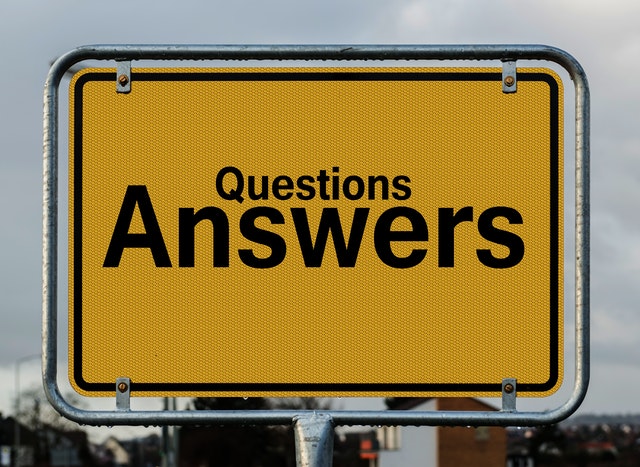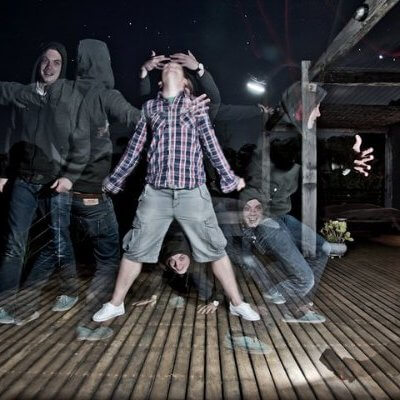Nick Atkinson is under the impression that the SEO game has changed completely and is leading the charge for the promotion of “CEO” (Content Engagement Optimisation). By shifting his focus to getting visitors to deeply engage in the responsive, creative and shareable content his team is crafting, Atkinson has reshaped his search marketing strategy.
Atkinson currently works as the Head of Digital (Publishing & Ecommerce) for Hardie Grant Publishing and has a background full of digital marketing experience with some major accomplishments. His 2008 project “Where’s Wally on Google Earth” campaign for Borders won the Nielsen Retail Marketing Campaign of the Year award and his post of “25 Ways to Generate Better Online Book Sales” was the most read blog post of 2012 on Futurebook.
His interview below gives a look behind the curtain and offers a glimpse into his thought process on content marketing, management, and the problem with Facebook.
1. You have been with Hardie Grant for around four and a half years now. Can you talk about what Hardie Grant does and your role within the company?
Sure, Hardie Grant is a publishing company with content in its DNA. Its heritage is in book and magazine publishing and custom media for clients. The business is comprised of a diverse and eclectic variety of companies. These include Hardie Grant Egmont – publishers of children’s and YA books and content including TinTin, DC and other international and local titles.
Also, Hardie Grant Books – an adult trade company that produces a lot on food and wine (Margaret Fulton, James Halliday, “Biggest Loser,” “Masterchef”), sports (Fev, Cadel Evans bios), some fiction, design and stationery. We also have Hardie Grant Explore (travel), Quadrille (a recent acquisition), Hardie Grant London, Universal Publishers and Hardie Grant Media (our content marketing and custom media business).
I work across all of the companies and the main focus of my role is to develop a range of digital strategies to help those businesses, and their clients, be successful online. Often that means creating digital products based around content areas that we already specialise in. We have an enterprise-level website portfolio that includes www.winecompanion.com.au (Australia’s number 1 wine site), www.cooked.com.au (one of my proudest achievements), www.beautifulaccommodation.com, www.bride.com.au, www.exploreaustralia.net.au and others.
We hit around half a million visitors each month across the web portfolio, and I guess the success or failure of those properties is ultimately my job. I’m also highly involved in pitching and developing content-marketing strategies for clients of Hardie Grant Media.
 2. As the Head of Digital, are you involved with the day-to-day marketing or are you more so managing the activities of your team?
2. As the Head of Digital, are you involved with the day-to-day marketing or are you more so managing the activities of your team?
I’m definitely involved in marketing. I’m a massive believer in not distancing yourself from the work as you progress up the career ladder, and I think I gravitate to more flat business organisation structures. I don’t see how I can drive my team forward unless I know the intricacies of the platforms and channels they are working on, and with (hopefully) over 30 years of my career remaining, it’s way too early to step out of any doing. People who lose sight of the real opportunities lose that because their understanding of the detail lessens. In digital the rapid evolution and success of our strategies relies on a deep understanding of the doing and that means getting your hands dirty.
3. Aside from your current position with Hardie Grant, I see that you previously worked with Borders and Summersdale. Did you always plan to work as a marketer in the publishing field? If not, how did you get there?
I started off as an intern in publishing, and I knew very quickly that marketing was the place for me. It’s the space where the fastest development happens, it’s often the most creative department, it’s on the front line of sales, and I believe that commercial success stems from your ability to market well (assuming you have a good product). I actually don’t consider myself as being ‘from publishing.’ I’m 100% digital.
My skills transfer across most industries and aside from satisfying my own personal reading appetite, I’m not that interested in books. Summersdale gave me an incredible background in video production and staff management at a very young age, and in many ways the challenge of growing a small business gives you the skills that big businesses really value – frugality, entrepreneurship, creativity, teamwork and an onus on self-learning.
My job at Borders and now at Hardie Grant is about developing and managing brands online, being channel agnostic and highly competent in all areas of digital. You’re the sum of your experience, and I’m incredibly grateful that mine is so broad and that I chose digital so early. I also grew up with computers – from programming my Commodore 64, to my ongoing addiction to Playstation, I guess digital has always been my comfort zone.
4. Which social media investments have had the greatest return for Hardie Grant, and where do you see the company expanding social efforts in the future?
Big question, controversial answers. My instinct is to say audience acquisition through Facebook (be it database growth or traffic, or improvement of organic search position), but – like a lot of marketers – my enthusiasm for Facebook is waning fast. You can’t ignore it as a channel, but you have no ownership of your audience (as the relentless spiral to 0% organic reach is showing).
Your business success is completely at the mercy of Facebook, especially if you rely too heavily on it as an acquisition channel and subsequently can’t afford the investment required for paid reach. In many ways with Facebook, you’re a victim of your own success.
The more successful you are, the more it costs you to be successful. It’s great business for Facebook, but ultimately I think it means the channel will end up with an unbalanced content mix. NFPs and smaller (but equally relevant) businesses will be crowded out of the market by big brands and that will be a shame.
It could end up costing Facebook dearly. When everything is paid for, quality doesn’t rise to the top. Give Google credit here, at least the algorithmic changes to search are all about favouring quality and eliminating bad SEO practise.
What does this mean for the future? It probably means that the future is about the next 3 months and that building in constant re-evaluation of your marketing strategy is absolutely necessary.
5. With digital marketing strategies, fads, and platforms constantly changing and evolving, how do you qualify which are viable and worth investment?
I think it’s simple – pinning your strategy to quality is the safest bet. And in that, I mean quality of content, channel quality, quality of targeting and relevance. I’d classify myself as channel-agnostic at work, but with personal preferences. The blend of channels that a strategy demands depends very much on who you’re trying to reach, with what type of messaging and in what medium.
So for me, the value and investment is justified when I can see a quality outcome. Dealing with change and evolution is an inherent part of working in digital. So balancing risk with innovation is normal. Marketers need a base of go-to reusable strategies, and so after testing, the channels that demonstrate ROI get the reinvestment.
6. What are your thoughts on the increased buzz around online video content marketing, and how have you approached video content creation in your role?
At my previous role for Borders, video was integral from the start of our digital strategy. We launched with an area of the site called Borders TV and worked with a video production company to provide regular high quality content for the channel. We also ran a really successful podcast with over 100,000 subscribers.
We saw it as a core part of building community, developing regular and repeat audiences, adding value to the shopping experience, influencing conversion and ultimately growing traffic. I think in some ways we were a little ahead of the game in those days and that we would have been even more successful launching that strategy today, at a time when online video consumption has increased so dramatically.
On a personal level I think online video has already killed traditional TV – the idea of being coerced into watching content at a specific time is positively ridiculous nowadays. Traditional channels have to embrace their roles as curators of content and grow niches accordingly.
In that respect, a YouTube channel is no different than a broadcast channel – the playing field is extremely level now. Brands have as much opportunity as independent producers to build successful channels, and therefore I don’t think you can ignore video as a marketing medium.
For example with Cooked, we expect video to become an extremely important part of our engagement and content marketing strategy. We’re just getting to grips with what we want to make and curate, who we want to make it with, and what our angle is going to be. We’re the brand, and we’re going to become a producer, curator and broadcaster. That’s an exciting place to be.
7. I saw on your LinkedIn profile that you believe the “traditional” approach to SEO is finished. Where do you see your focus and emphasis on search marketing moving, as far as some untraditional or new approaches that you’ve found success with?
I’m toying with a new acronym – CEO – Content Engagement Optimisation. My interest in traditional SEO is waning fast – algorithm changes constantly seem to invalidate previous work, and we’re clearly moving to a place where your search success is influenced by the distribution and engagement levels your content receives – metrics driven by quality.
So, although I understand the need to keep a good link profile, to grow organic back links, to have a good no-follow strategy in place and to optimise your metadata (blah blah..), I’m less hung up on that than ever before. I’m for building content strategies around engagement. How can we produce and distribute content that’s engaging, how can we optimise article structures to make people read deeply, get the main messages and share that content?
How can we re-engineer single pieces of content to work across multiple channels? How does someone’s content experience differ between desktop and mobile? And that’s where the term CEO comes from. I think CEO is the new king of search marketing, and I’d hope that Google would be happy to hear that!
8. You mention on your profile page that you understand how engagement leads to real business. How has Hardie Grant increased their customer’s engagement on mobile devices?
I think it’s not that I understand how, it’s that I understand that it does. Deeper engagement and stronger engagement metrics always seem evident on the better performing commercial websites that I’ve worked on. Better engagement brings better advertising revenue, it brings better sign-up numbers for subscriptions and it brings higher volumes of ecommerce. And if you take those things seriously then mobile has to be at the core.
Cooked is a great example – it was designed for mobile first and scaled out to desktop. We didn’t want to compromise a person’s experience just because of the device they chose to access from. Any functionality that we put in had to be possible (and work well) on mobile. We’re looking forward to launching that site in the UK and beyond, and mobile is an absolute core part of that being successful.
I can let you in on a secret – we saw a day of traffic recently, on Cooked that had only 26% of sessions occurring on desktop, which is the highest we’ve seen for a content website. You can’t ignore mobile in that scenario. The rise of mobile has meant that we’ve adapted publishing workflows and our approaches to development. It means thinking mobile-first in marketing is non-negotiable.
 9. What are some past projects you enjoyed working on the most?
9. What are some past projects you enjoyed working on the most?
Cooked is an obvious one – it’s a superb website that I’m incredibly proud of. I came up with the concept for the site and with an incredibly talented team, we turned it into a reality. But to answer your question, I’m going to reach into the past…. At Borders I worked on a fabulous piece of marketing called “Where’s Wally on Google Earth” – a campaign I won a prestigious industry award for.
The idea was simple. We created a skin for Google Earth and hid Wally in a different place each day. We produced a campaign video distributed on the homepage of YouTube, published the clues to Wally’s location in the Daily Telegraph (in print and online) every day (it made the cover), and it was an extremely fun piece of marketing that had extraordinary results. We acquired over 80,000 new email sign ups in a week, had a fantastic market share on product and most importantly did something creative and fun that people really enjoyed doing with their kids online.
10. What is the marketing book that has helped you the most in your position?
Easy. The Tipping Point by Malcom Gladwell, and I loved the Zero Moment of Truth paper that Google put out. Those two works have definitely influenced my approach to digital. Provide people with the right information or ideas in an engaging way, at the right time, in the right medium, and you stand a good chance of influencing action. That’s what marketing is all about, right?






